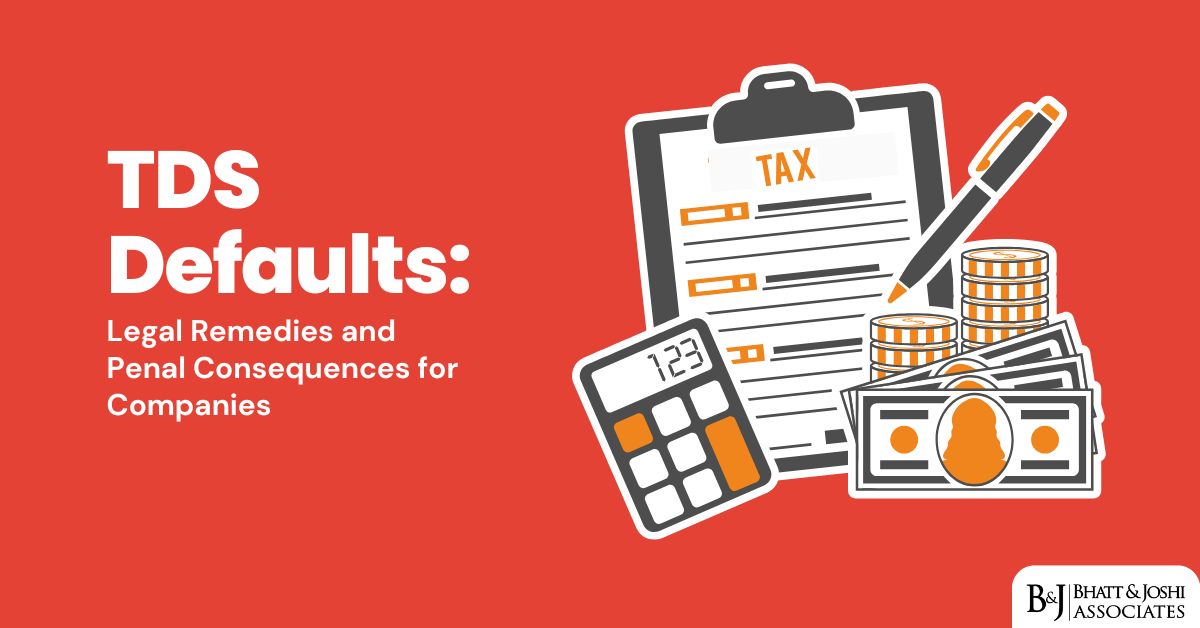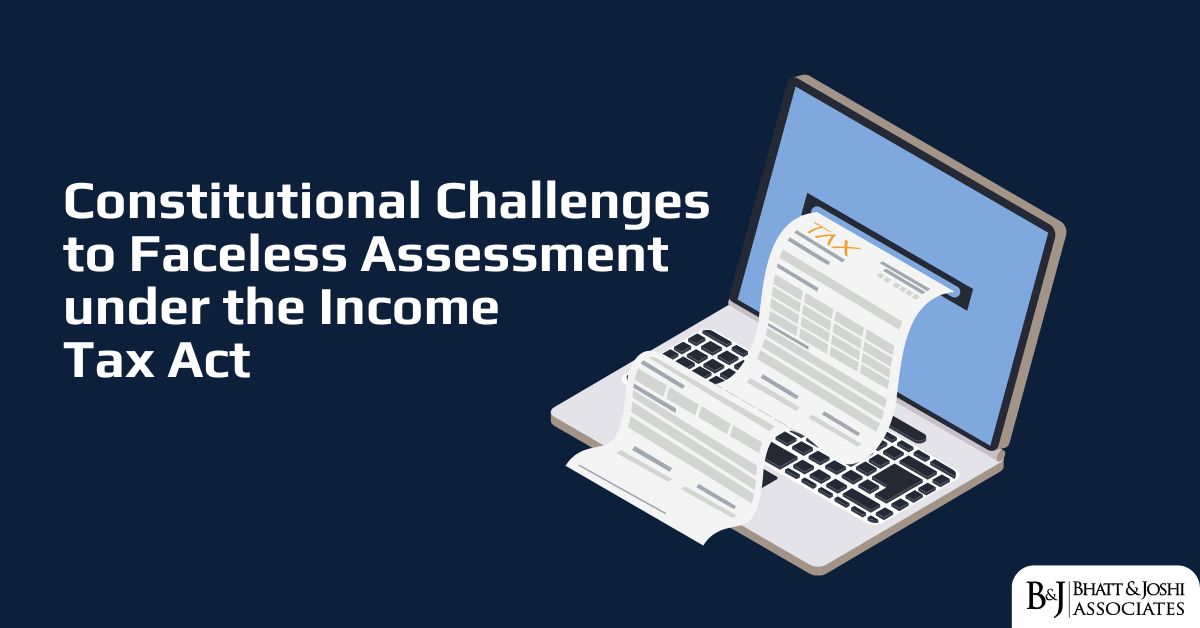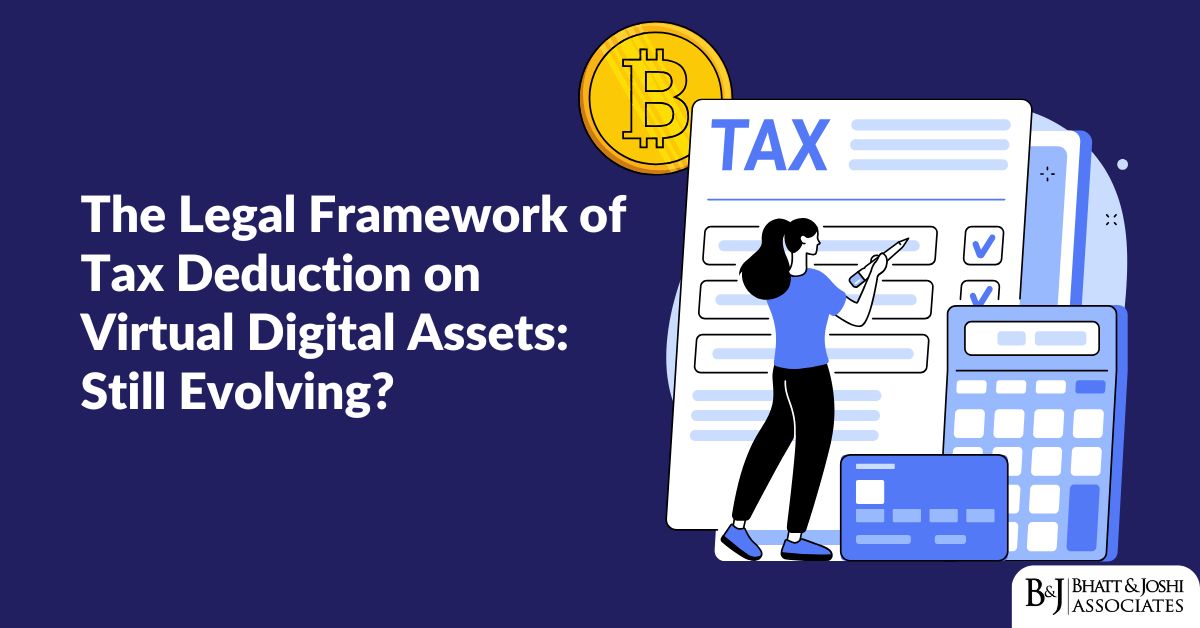Introduction
Capital raising represents one of the most fundamental functions of securities markets, allowing companies to finance growth, innovation, and operational requirements. In India, companies seeking to raise additional capital after their initial public offerings have several instruments at their disposal, with preferential allotments and rights issues standing out as the predominant mechanisms. These two routes to capital acquisition operate under distinct regulatory frameworks, creating differences in procedural requirements, pricing methodologies, disclosure obligations, and timeline constraints. The disparities have led to ongoing debate about whether these differing regimes create opportunities for regulatory arbitrage or simply offer necessary flexibility to accommodate diverse corporate funding needs. This article examines the regulatory landscapes governing preferential allotment vs. rights issue in India, analyzes the significant differences between these frameworks, explores how companies navigate these divergent paths, and evaluates whether regulatory harmonization or continued differentiation better serves market efficiency and investor protection.
Regulatory Framework Governing Preferential Allotments
Preferential allotments in India are governed primarily by the SEBI (Issue of Capital and Disclosure Requirements) Regulations, 2018 (ICDR Regulations), specifically Chapter V, which replaced the earlier ICDR Regulations of 2009. This regulatory framework has evolved through multiple amendments, reflecting SEBI’s ongoing efforts to balance issuer flexibility with investor protection.
Section 42 of the Companies Act, 2013, read with Rule 14 of the Companies (Prospectus and Allotment of Securities) Rules, 2014, provides the statutory foundation for preferential issues, establishing the basic corporate law requirements. However, for listed entities, the more detailed and stringent SEBI regulations take precedence through Regulation 158-176 of the ICDR Regulations.
The ICDR Regulations define a preferential issue as “an issue of specified securities by a listed issuer to any select person or group of persons on a private placement basis.” This definition highlights the selective nature of these offerings, which are typically directed toward specific investors rather than the general shareholder base or public.
The regulatory framework imposes several key requirements on preferential allotments:
Regulation 160 establishes eligibility criteria for issuing preferential allotments, requiring that “the issuer is in compliance with the conditions for continuous listing of equity shares as specified in the listing agreement with the recognised stock exchange where the equity shares of the issuer are listed.” Furthermore, all existing promoters and directors must not be declared fugitive economic offenders or willful defaulters.
Pricing methodology constitutes perhaps the most critical aspect of preferential allotment regulation. Regulation 164(1) prescribes that the minimum price for frequently traded shares shall be higher of: “the average of the weekly high and low of the volume weighted average price of the related equity shares quoted on the recognised stock exchange during the twenty six weeks preceding the relevant date; or the average of the weekly high and low of the volume weighted average price of the related equity shares quoted on a recognised stock exchange during the two weeks preceding the relevant date.”
Lock-in requirements form another crucial protective measure. Regulation 167(1) mandates that “the specified securities, allotted on a preferential basis to the promoters or promoter group and the equity shares allotted pursuant to exercise of options attached to warrants issued on a preferential basis to the promoters or the promoter group, shall be locked-in for a period of three years from the date of trading approval granted for the specified securities or equity shares allotted pursuant to exercise of the option attached to warrant, as the case may be.”
For non-promoter allottees, Regulation 167(2) prescribes a reduced lock-in period of one year from the date of trading approval. These lock-in provisions aim to prevent immediate post-issuance securities dumping and ensure longer-term commitment from allottees.
The ICDR Regulations also impose substantial disclosure requirements through Regulation 163, mandating that the explanatory statement to the notice for the general meeting must contain specific information including objects of the preferential issue, maximum number of securities to be issued, and intent of the promoters/directors/key management personnel to subscribe to the offer.
In terms of procedural timeline, preferential allotments must be completed within a finite period. Regulation 170 stipulates that “an allotment pursuant to the special resolution shall be completed within a period of fifteen days from the date of passing of such resolution.” This tight timeline ensures that market conditions reflected in the pricing formula remain reasonably current at the time of actual allotment.
Regulatory Framework Governing Rights Issues
Rights issues operate under a distinctly different regulatory framework, primarily governed by Chapter III of the SEBI ICDR Regulations, 2018 (Regulations 60-98) and sections 62(1)(a) of the Companies Act, 2013.
Section 62(1)(a) of the Companies Act establishes the fundamental premise of rights issues: “where at any time, a company having a share capital proposes to increase its subscribed capital by the issue of further shares, such shares shall be offered to persons who, at the date of the offer, are holders of equity shares of the company in proportion, as nearly as circumstances admit, to the paid-up share capital on those shares.”
Unlike preferential allotments, rights issues embody the principle of pre-emptive rights, allowing existing shareholders to maintain their proportional ownership in the company. Regulation 60 of the ICDR Regulations defines a rights issue as “an offer of specified securities by a listed issuer to the shareholders of the issuer as on the record date fixed for the said purpose.”
The regulatory framework for rights issues contains several distinctive features:
Pricing flexibility represents one of the most significant differences from preferential allotments. Regulation 76 simply states that “the issuer shall decide the issue price before determining the record date which shall be determined in consultation with the designated stock exchange.” This provision grants issuers considerable latitude in pricing rights issues, without mandating any specific pricing formula. In practice, rights issues are typically priced at a discount to the current market price to incentivize shareholder participation.
Disclosure requirements for rights issues are comprehensive but tailored to the nature of these offerings. Regulation 72 mandates detailed disclosures in the draft letter of offer including risk factors, capital structure, objects of the issue, and tax benefits, among other information. While these requirements ensure investor protection through transparency, they differ from preferential allotment disclosures in their focus on general shareholders rather than specific allottees.
Timeline provisions for rights issues are more accommodating than those for preferential allotments. Regulation 95 states that “the issuer shall file the letter of offer with the designated stock exchange and the Board before it is dispatched to the shareholders.” After SEBI observations, Regulation 88 requires that “the issuer shall file the letter of offer with the designated stock exchange and the Board before it is dispatched to the shareholders.” The regulations permit a period of up to 30 days for the issue to remain open, providing more operational flexibility compared to preferential allotments.
A distinctive aspect of rights issues is the tradability of rights entitlements. Regulation 77 explicitly states that “the rights entitlements shall be tradable in dematerialized form.” This tradability allows shareholders who do not wish to subscribe to their entitlements to nevertheless capture value by selling these rights to others who may value them more highly.
Regulatory Differences: Preferential Allotment vs. Rights Issue
Several significant disparities between the regulatory frameworks of Preferential Allotment vs. Rights Issue create potential avenues for regulatory arbitrage, where companies might strategically select one route over another based not on fundamental business needs but on regulatory advantages.
Pricing Methodology Disparities in Preferential Allotment and Rights Issue
The most conspicuous disparity relates to pricing methodology. While preferential allotments are subject to the rigid pricing formula under Regulation 164 based on historical trading prices, rights issues permit issuers to determine prices without regulatory prescription. This distinction has profound implications for capital raising in volatile market conditions.
In Tata Motors Ltd v. SEBI (SAT Appeal No. 25 of 2015), the Securities Appellate Tribunal observed: “The pricing formula for preferential allotments serves the important regulatory purpose of preventing abuse through artificially depressed issuance prices that could dilute existing shareholders’ value. However, this protection becomes unnecessary in rights issues where all existing shareholders have proportionate participation rights, eliminating the dilution concern that motivates preferential pricing regulations.”
The case of Reliance Industries’ 2020 rights issue illustrates this disparity’s practical significance. The company raised ₹53,124 crore through a rights issue priced at ₹1,257 per share, representing a 14% discount to the market price at announcement. Had the company pursued a preferential allotment, the ICDR formula would have required a significantly higher price, potentially jeopardizing the issue’s success given prevailing market uncertainty during the pandemic.
Flexibility in Investor Selection
Preferential allotments allow companies to selectively choose their investors, potentially bringing in strategic partners or institutional investors with specific expertise or long-term commitment. Rights issues, conversely, must be offered proportionately to all existing shareholders, though undersubscribed portions may eventually be allocated at the board’s discretion.
In Eicher Motors Limited v. SEBI (2018), SAT recognized this distinction’s legitimate business purpose: “The regulatory distinction between preferential allotments and rights issues reflects the fundamentally different purposes these capital raising mechanisms serve. Preferential allotments facilitate strategic capital partnerships and targeted ownership structures, while rights issues prioritize existing shareholder preservation of proportional ownership. These distinct commercial objectives justify different regulatory approaches.”
Timeline and Procedural Requirements
Preferential allotments offer speed advantages, with Regulation 170 requiring completion within 15 days of shareholder approval. Rights issues involve more extended timelines, including SEBI review periods and 15-30 day subscription windows. This temporal difference can be decisive during periods of market volatility or when companies face urgent capital needs.
The Supreme Court acknowledged this distinction’s practical importance in SEBI v. Burman Forestry Limited (2021): “Regulatory timelines serve different purposes in different capital raising contexts. The expedited timeline for preferential allotments recognizes the typical urgency and targeted nature of such fundraising, while the more deliberate rights issue process reflects the broader shareholder engagement these offerings entail.”
Lock-in Period Differences: Preferential Allotments vs. Rights Issues
Preferential allotments impose significant lock-in requirements—three years for promoter group allottees and one year for others. In contrast, shares issued through rights offerings face no regulatory lock-in periods. This distinction can significantly impact investor willingness to participate, particularly for financial investors with defined investment horizons.
In Kirloskar Industries Ltd v. SEBI (SAT Appeal No. 41 of 2020), the tribunal observed: “Lock-in requirements serve as an important protection against speculative issuances in preferential allotments, where selective investor participation creates potential for market manipulation. These concerns are absent in rights issues where all shareholders receive proportionate participation opportunities, justifying the regulatory distinction regarding lock-in periods.”
Landmark Decisions on Preferential Allotment vs. Rights Issue
Several landmark judicial decisions have shaped the interpretation and application of these divergent regulatory frameworks, providing crucial guidance on their boundaries and interrelationships.
Distinguishing Between Regulatory Regimes: Sandur Manganese & Iron Ores Ltd. v. SEBI (2016)
This pivotal case addressed the fundamental question of how to categorize capital raises when they contain elements of both preferential allotments and rights issues. Sandur Manganese proposed an issue to existing shareholders but with disproportionate entitlements based on willingness to participate.
SAT held: “The defining characteristic of a rights issue under Regulation 60 is proportionate offering to all shareholders based on existing shareholding percentages. Any departure from this foundational principle renders the issue a preferential allotment subject to Chapter V requirements, regardless of whether the offer is extended only to existing shareholders. The regulatory framework does not permit hybrid instruments that selectively apply favorable elements from both regimes.”
This decision established a bright-line rule preventing companies from structuring offerings to arbitrage between regulatory regimes, affirming that the substance rather than mere form determines regulatory classification.
Testing the Boundaries: Fortis Healthcare Ltd. v. SEBI (2018)
In this significant case, Fortis Healthcare structured a capital raise as a rights issue but with an accelerated timetable and abbreviated disclosure process. When challenged by SEBI, the company argued that the urgency of its capital requirements justified procedural departures.
SAT rejected this argument: “The ICDR Regulations establish distinct and comprehensive regulatory frameworks for different capital raising mechanisms. The specific procedural requirements for rights issues under Chapter III are not discretionary guidelines but mandatory regulatory requirements. Commercial exigency, while understandable, cannot justify regulatory circumvention. Companies facing urgent capital needs must select the appropriate regulatory pathway based on their circumstances rather than attempting to modify regulatory requirements to suit their preferences.”
This ruling reinforced the integrity of the regulatory boundaries between different capital raising mechanisms and clarified that business necessity does not create implicit regulatory exceptions.
Clarifying Promoter Participation: Tata Steel Ltd. v. SEBI (2019)
This case addressed the intersection of promoter participation across different capital raising mechanisms. Tata Steel proposed a rights issue with a standby arrangement whereby the promoter would subscribe to any unsubscribed portion. SEBI initially classified this arrangement as a preferential allotment requiring compliance with the stricter pricing formula.
SAT overruled this interpretation: “Promoter underwriting of unsubscribed portions in rights issues does not transform the fundamental character of the offering from a rights issue to a preferential allotment. The key distinction lies in the initial proportionate opportunity afforded to all shareholders. The subsequent allocation of unsubscribed shares, whether to promoters or other subscribing shareholders, remains within the rights issue framework provided the initial rights were offered proportionately.”
This decision clarified that promoter support for rights issues through standby arrangements remains within the rights issue regulatory framework, providing important guidance on structuring such offerings.
Addressing Potential Abuse: SEBI v. Bharti Televentures Ltd. (2021)
This landmark Supreme Court case addressed SEBI’s authority to intervene when companies potentially abuse the regulatory distinctions between capital raising mechanisms. Bharti Televentures had conducted a rights issue priced significantly below market value, immediately followed by a preferential allotment to institutional investors at market price. SEBI alleged this sequential structure artificially circumvented preferential pricing requirements.
The Supreme Court upheld SEBI’s intervention: “While distinct regulatory frameworks govern different capital raising mechanisms, SEBI retains authority under Section 11 of the SEBI Act to intervene when companies structure sequential or related transactions specifically to circumvent regulatory requirements. This authority stems from SEBI’s fundamental mandate to protect investor interests and ensure market integrity. Where evidence indicates deliberate regulatory arbitrage rather than legitimate business planning, SEBI may look beyond form to substance in exercising its regulatory oversight.”
This judgment established an important anti-abuse principle that prevents the most egregious forms of regulatory arbitrage while preserving the distinct regulatory frameworks for legitimate use.
Global Perspectives on Preferential Allotment vs. Rights Issue
India’s divergent regulatory frameworks for preferential allotment vs. rights issue reflect a particular policy approach that balances investor protection with issuer flexibility. Examining how other major securities jurisdictions approach this regulatory distinction provides valuable perspective on alternative models and their implications.
United States Approach
The U.S. regulatory framework under the Securities Act of 1933 and Securities Exchange Act of 1934 adopts a more unified approach to private placements (similar to preferential allotments) and rights offerings. Both mechanisms potentially qualify for exemptions from full registration requirements under Regulation D or Rule 144A, though with different underlying rationales.
Unlike India’s formulaic pricing requirements for preferential allotments, U.S. regulations impose no specific pricing methodology for private placements. Instead, the regulatory focus centers on sophisticated investor participation and information disclosure. Similarly, rights offerings receive pricing flexibility, though with enhanced disclosure requirements when exceeding certain thresholds.
The U.S. Supreme Court in SEC v. Ralston Purina Co. (1953) established the philosophical foundation for this approach: “The applicability of the Securities Act exemptions depends on whether the particular class of persons affected needs the protection of the Act. An offering to those who are shown to be able to fend for themselves is a transaction not involving any public offering.”
This principles-based approach contrasts with India’s more prescriptive regulations, particularly regarding preferential allotment pricing. The U.S. model offers greater flexibility but potentially less certainty for market participants.
United Kingdom and European Union Approach
The UK and EU regulatory frameworks establish a clearer distinction between rights issues and private placements through the EU Prospectus Regulation (2017/1129) and national implementing legislation. However, the regulatory disparities are less pronounced than in India.
Rights issues benefit from certain prospectus exemptions and procedural accommodations, but pricing regulations remain relatively harmonized between capital raising mechanisms. Both rights issues and private placements must generally be priced with reference to prevailing market conditions, though without India’s specific mathematical formula for preferential allotments.
The European approach emphasizes proportionate regulation based on investor protection needs rather than creating distinctly different regulatory frameworks. The European Court of Justice in Audiolux SA v. Groupe Bruxelles Lambert SA (2009) held: “The principle of equal treatment of shareholders does not constitute a general principle of Community law extending beyond the specific directives that implement it in particular contexts.”
This intermediate approach offers less opportunity for regulatory arbitrage than India’s system while maintaining reasonable distinctions between different capital raising mechanisms.
Singapore Approach
Singapore’s regulatory framework under the Securities and Futures Act and Singapore Exchange Listing Rules presents an interesting hybrid approach. Like India, Singapore maintains distinct frameworks for rights issues and private placements, but with less pronounced disparities in key areas such as pricing.
Private placements (similar to preferential allotments) must be priced at no more than a 10% discount to the weighted average price for trades on the exchange for the full market day on which the placement agreement was signed. Rights issues receive greater pricing flexibility but remain subject to certain constraints for larger discounts.
This approach reduces the potential for regulatory arbitrage while maintaining appropriate distinctions between capital raising mechanisms serving different purposes. The Singapore Court of Appeal in Lim Hua Khian v. Singapore Medical Council (2011) endorsed this balanced approach: “Regulatory distinctions should be proportionate to the different risks presented by different transaction types, without creating unnecessary opportunities for circumvention.”
Regulatory Arbitrage or Necessary Flexibility? A Critical Analysis
The disparate regulatory frameworks for preferential allotment vs. rights issue in India present both challenges and opportunities for market participants and regulators. The key question remains whether these differences primarily facilitate inappropriate regulatory arbitrage or provide necessary flexibility for diverse corporate funding needs.
The Case for Regulatory Harmonization in Capital Raising Norms
Proponents of greater regulatory harmonization argue that pronounced disparities between capital raising mechanisms create incentives for companies to select particular routes based on regulatory advantage rather than business appropriateness. Several legitimate concerns support this perspective:
Market integrity concerns arise when companies can potentially circumvent investor protections by strategically selecting between regulatory regimes. The significant pricing flexibility in rights issues compared to the rigid formula for preferential allotments creates particular vulnerability in this regard.
In a 2019 consultation paper, SEBI itself acknowledged this concern: “The disparity in pricing methodologies between preferential allotments and rights issues may incentivize companies to structure capital raises to minimize pricing constraints rather than optimize capital structure. This regulatory arbitrage potential could undermine the pricing discipline that preferential regulations seek to ensure.”
Investor protection considerations also support harmonization arguments. The stricter preferential allotment regulations developed in response to historical abuses involving artificially depressed issuance prices and unfair dilution of non-participating shareholders. Rights issues theoretically protect all shareholders through proportionate participation opportunities, but practical constraints may limit actual participation by smaller investors.
Justice Ramasubramanian observed in SEBI v. Bharti Televentures Ltd. (2021): “While rights issues offer theoretical protection through participation rights, information asymmetries and resource constraints may prevent smaller shareholders from exercising these rights effectively. This practical reality suggests that some harmonization of investor protection measures across capital raising mechanisms may be appropriate.”
Regulatory complexity and compliance costs represent additional concerns. Maintaining parallel regulatory frameworks increases compliance burdens for issuers and creates potential for inadvertent violations. More harmonized regulations could reduce these friction costs while maintaining appropriate investor protections.
The Case for Regulatory Differentiation in Preferential Allotment vs. Rights Issue
Despite these concerns, compelling arguments support maintaining distinct regulatory frameworks tailored to the different purposes and structures of these capital raising mechanisms:
Functional differentiation between preferential allotments and rights issues justifies different regulatory approaches. Preferential allotments serve distinct corporate objectives including strategic partnerships, targeted ownership changes, and specialized investor participation. Rights issues primarily serve broader capital raising purposes while preserving ownership proportions. These functional differences logically support tailored regulatory frameworks.
The Bombay High Court recognized this distinction in Grasim Industries Ltd. v. SEBI (2020): “The regulatory frameworks governing preferential allotments and rights issues reflect their fundamentally different purposes in corporate finance. Preferential allotments facilitate strategic capital partnerships and targeted ownership adjustments, while rights issues enable proportionate capital raising across the shareholder base. These distinct functions justify appropriately differentiated regulatory approaches.”
Practical business necessities also support regulatory differentiation. Companies face diverse capital raising challenges requiring different tools and regulatory accommodations. Startup companies seeking strategic investors present different regulatory concerns than established public companies raising general expansion capital from existing shareholders.
Former SEBI Chairman U.K. Sinha articulated this perspective: “Securities regulation must balance investor protection with capital formation objectives. Different capital raising mechanisms serve different market segments and business needs. Regulatory frameworks should reflect these differences rather than imposing one-size-fits-all approaches that may inadequately address the specific risks or needs of particular transaction types.”
Market efficiency considerations further support measured regulatory differentiation. Excessive harmonization could eliminate valuable capital raising alternatives, reducing market efficiency and potentially increasing capital costs. Some regulatory differences reflect genuine distinctions in investor protection needs rather than arbitrary regulatory inconsistency.
Policy Recommendations and Potential Reforms
Based on this analysis of preferential allotment vs. rights issue, several potential reforms could address legitimate concerns about regulatory arbitrage while preserving necessary flexibility for diverse corporate funding needs:
Targeted Harmonization of Pricing Regulations
The most pronounced regulatory disparity concerns pricing methodology. A more balanced approach could maintain some pricing differential to reflect the different nature of these offerings while reducing the arbitrage potential:
For preferential allotments, SEBI could consider moderating the current pricing formula to provide greater flexibility in volatile market conditions. Rather than using a rigid 26-week lookback period, regulations could incorporate shorter reference periods or market-responsive adjustments during periods of exceptional volatility.
For rights issues, introducing limited pricing guidelines rather than complete issuer discretion could reduce the most extreme disparities. These guidelines might establish maximum discount parameters for rights issues without imposing the full preferential pricing formula.
Enhanced Disclosure Requirements for Significant Rights Discounts
When companies propose rights issues at substantial discounts to market price or preferential pricing formula levels, enhanced disclosure requirements could mitigate potential abuse. These requirements might include:
- Detailed justification for the proposed discount and consideration of alternatives
- Independent valuation reports supporting the pricing decision
- Enhanced disclosure of potential dilution impacts on non-participating shareholders
- Specific board certification regarding the pricing fairness
Principles-Based Anti-Arbitrage Provisions
Rather than eliminating beneficial regulatory distinctions, SEBI could codify anti-arbitrage principles developed through case law. These provisions would establish clearer boundaries while preserving legitimate regulatory differentiation:
- Prohibition of structuring transactions specifically to circumvent regulatory requirements
- Mandatory integration analysis for sequential or related capital raises within defined timeframes
- Substance-over-form principles for classifying hybrid or novel offering structures
- Specific focus on potential abuse in transactions involving promoter or related party participation
Proportionate Regulation Based on Transaction Size and Participant Sophistication
SEBI could consider implementing a more graduated regulatory approach based on offering size and intended participant sophistication. This approach would maintain stronger protections for retail-oriented offerings while providing greater flexibility for transactions primarily involving institutional investors.
Regulatory Sandbox for Innovative Capital Raising Structures
To accommodate emerging capital needs while managing regulatory arbitrage concerns, SEBI could establish a regulatory sandbox framework specifically for innovative capital raising structures. This controlled environment would allow testing of new approaches that don’t fit neatly within existing frameworks while maintaining appropriate investor protections.
Conclusion
The distinct regulatory frameworks governing preferential allotment vs. rights issue in India reflect an evolutionary regulatory response to different capital raising mechanisms serving varied market purposes. While these differences create potential for regulatory arbitrage, they also provide valuable flexibility addressing diverse corporate funding needs.
The optimal approach likely involves targeted reforms addressing the most problematic disparities while preserving appropriate regulatory differentiation reflecting genuine functional differences. Particularly in pricing methodology, where current disparities appear disproportionate to legitimate functional distinctions, measured harmonization could reduce arbitrage opportunities without sacrificing necessary flexibility.
The jurisprudence developed through landmark cases provides valuable guidance for this balanced approach. Courts have recognized both the legitimacy of distinct regulatory frameworks and the need for anti-abuse principles preventing their exploitation through artificial transaction structuring. These judicial principles could inform codified regulatory provisions that provide greater clarity while preserving appropriate differentiation.
As India’s capital markets continue evolving, maintaining this delicate balance between investor protection and capital formation efficiency will remain a crucial regulatory challenge. Targeted reforms addressing the most significant arbitrage opportunities in preferential allotment vs. rights issue, while preserving flexibility for legitimate business needs, represent the most promising path forward. This balanced approach would maintain India’s trajectory toward increasingly sophisticated capital markets while ensuring appropriate investor protections across the regulatory landscape..














